Effective email marketing strategies can be vital to achieving your overall marketing strategy goals. It provides a ton of opportunities to marketers looking to expand their audiences.
Not convinced?
Take a look at these statistics:
A survey by the Content Marketing Institute revealed that 87% of B2B marketers use email to distribute their content.
Furthermore, 77% of them use email newsletters as a preferred content type for their email campaign.
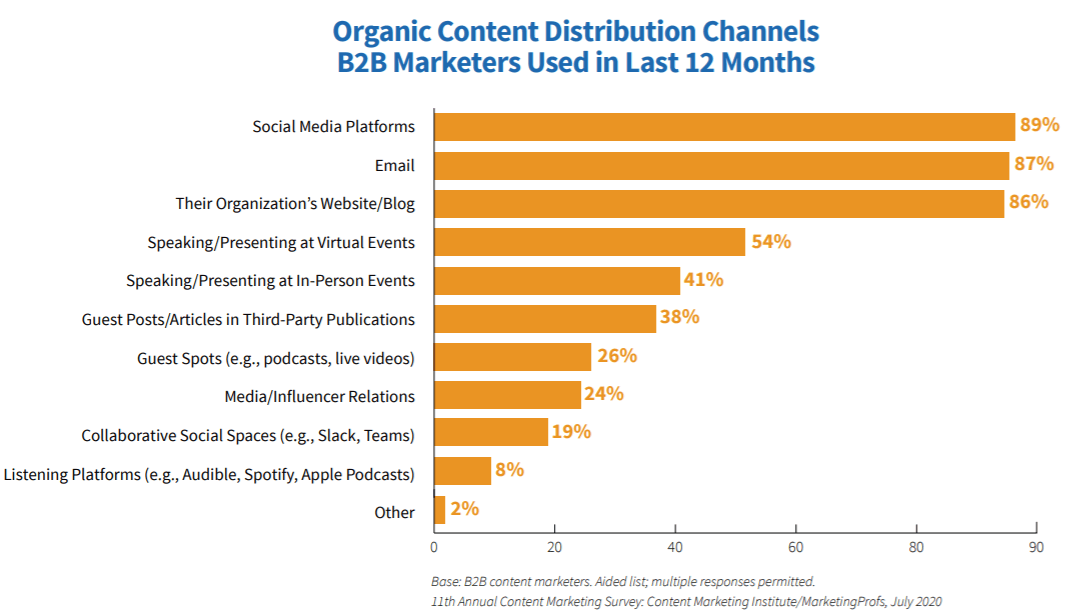
A well-crafted strategy for your email marketing campaigns can help you drive conversions and boost your revenue as well as customer relationships.
And, if done right, the ROI of email marketing can be high.
According to DMA’s Marketer Email Tracker 2020 report, you can expect an average return of $35.40 for every $1 spent.
It’s evident that a good strategy for email marketing can get you a high ROI. Email marketing has the potential to help you grow your business, even a small business quickly.
So what’s the problem?
Most people aren’t sure how to plan and execute their email campaigns right. To learn how to make the most out of your email marketing, check out Omnisend today.
Table of Contents
Your Guide to Creating a Successful Email Marketing Campaign
Creating an effective strategy is crucial for the success of your or your clients’ email campaigns.
If you don’t have a clear strategy, you might as well be shooting arrows in the dark.
But, how can you create a winning strategy for email marketing?
Let’s take a look at some of the best practices you should follow to create a successful strategy for marketing purposes.
1. Define Your Goals
Before you begin planning your strategy for marketing purposes, it’s important to define your goals.
Determine what you want to achieve at the end of your email marketing campaign.
Some of the most common marketing goals for an email campaign include:
- Increase brand visibility
- Increase sales
- Acquire new customers
- Build relationships with existing customers and improve customer relationship management
- Increase brand loyalty and loyal customers
- Increase website traffic
Outlining the objectives for your strategy is crucial for your marketing campaign.
It will help you stay focused throughout the different stages of your campaign.
2. Build An Organic Email Marketing List
Building an organic email marketing list is crucial to the success of your strategy. There are a lot of marketers who buy email marketing lists.
Sure, it’s a shortcut to reach out to more people in a short span of time. It also requires less effort.
But don’t do it.
Why?
You may end up damaging your reputation by using borrowed, scrapped, or purchased lists.
It’s not a good idea to use email marketing lists as your emails could end up in the spam folder. Also, a lot of contacts in purchased email marketing lists might be fake.
Why is that a problem for you?
When your emails end up in the inbox of someone who isn't interested, they will simply ignore it. This means you may not get good click-through rates or open rates.
To craft a successful strategy for your marketing campaign, it’s important to send emails to your target audience.
You need to send emails to people who show an interest in your industry, niche, or products.
An easy way to build a great organic list is to include a “Subscribe” button on your website. To register email IDs, you will need to link this button to an opt-in form.
What else?
Another popular strategy for marketing campaigns to encourage subscriptions is to offer something to users in exchange for their email IDs.
This could be anything from free trials to webinars and podcasts.
You can also use gated content to build your email marketing lists. Simply create a useful content resource that your target audience will want.
Then give them the resource for free to re-engage them if they provide their email information.
3. Segment Your Email Marketing Lists
Once you have your email marketing list, segment it based on relevant parameters.
Email list segmentation can go a long way in making your strategy more organized and effective.
Here are some parameters you can consider while segmenting your email marketing lists:
- Lifecycle stages of users
- Demographics – gender, location, age, job title
- User behavior and engagement
- Buying frequency
By creating segments in your email marketing list, you can tailor your email communication to match the needs of a particular segment.
Instead of sending generic emails, segmentation allows you to add a touch of personalization to your emails.
Segmentation is at the core of any successful strategy. It helps you understand who your subscribers are and how you can target them.
Looking for a good example?
Sephora uses this strategy to increase their customer retention rate and customer loyalty.
When a customer makes a purchase, they calculate how long the product may last.
If the product is estimated to last for one month, they send out an email reminder to restock around that time.
This way, they segment customers who might be looking to re-purchase the product.
By sending them an email to restock at the right time, they maximize their chances of getting a click.
4. Clean Your Email List
The biggest asset of any strategy is the subscriber list. So, it is essential that you check and update your list at regular time intervals.
Keep updating your customer data and remove all users from your list who have unsubscribed from your emails.
Does it sound counter-productive?
It isn't. By keeping inactive users in your email lists, you’ll see a drop in your engagement levels.
Most email providers have an option to remove inactive subscribers automatically. So, you won’t have to spend hours trying to update the list manually.
5. Craft Compelling Subject Lines
Why are subject lines important?
When a subscriber receives your email, the first thing that they are likely to notice is your subject line.
It can be the deciding factor for whether a user opens your email or not.
Email subject lines are crucial for your email marketing campaign because they directly affect your open rate.
A compelling subject line can pique the curiosity of your readers and grab their attention.
What’s the magic formula to craft compelling email subject lines?
There is no fixed formula.
However, subject fields that include the recipient's name are likely to get more attention.
Similarly, it’s a good idea to include your latest offers, like a discount code or a coupon code, in your email subject line. They can motivate users to open the email and to make a purchase.
Here are some other best practices for email marketing that will help you write compelling subject lines:
- Keep your lines short.
- Avoid using spammy phrases like “Free” and “Earn Money.” They could land your emails in the spam folder.
- Phrase your subjects as if you are asking your recipients a question. It sounds more engaging and conversational.
What's the bottom line?
Compelling subject titles can take your email marketing campaign to the next level. So, create good subject lines and use subject line testers to optimize them.
6. Get the Tone and Timing Right
In addition to crafting engaging subject headings, you also need to write quality content so that it resonates with your audience.
After all, content is at the core of email marketing efforts for even small businesses.
While writing content for your emails, stay true to your brand’s voice. In addition to this, add prominent call-to-action buttons to prompt users to take action.
Another factor to consider is the timing of your emails. Here is a common dilemma that email marketers face:
When is the best time to send emails?
There is no clear answer to this question.
The best time will depend on your audience and objectives. Test different times and check your open rates to find the best time to send your emails.
7. Use an Attractive Design
A beautiful email design can go a long way to drive conversions for you. It’s an underrated yet important factor in developing a successful strategy for marketing purposes.
So, how can you design attractive emails?
Here are some factors you should keep in mind while designing your email templates:
- Use a vertical layout
- Use ample white space
- Keep your sentences and paragraphs short
- Make your call-to-action button prominent
- Avoid using too many images
- Add buttons to share on social media
- Provide your complete contact details in the footer
You can also use email marketing platforms such as Brevo (formerly Sendinblue) that provide you with beautifully-designed templates and a drag-and-drop builder.
They can help you create professional-looking emails and personalize your email copy with advanced personalization options.
Another one of the advantages of using this platform is that it offers a machine learning-powered send-time optimization feature.
What’s so great about this feature?
You can also use email template builders to design your own customized email templates.
8. A/B Test Your Emails
Not getting the desired results from your email campaigns?
A/B test your emails. A/B testing can give valuable insights that can help optimize your strategy for better results.
For A/B testing marketing channels, you should prepare multiple email templates before you send them out.
Test different versions of your subject heading, design, and email content.
Through A/B testing, you will be able to figure out which email templates perform the best.
So, what’s the plan of action?
Experiment with font sizes, color, and different call-to-action buttons.
Thoroughly test your emails across different devices along and check which ones get the best response.
Once you send out your emails, invest some time into understanding how users react to them.
Track and analyze your open rate, click-through rate, and bounce rate.
Testing and analyzing your results is the only way you can improve your email marketing campaign.
9. Schedule Your Emails
Email marketing is a great way to build strong relationships with your customers.
To create an effective strategy, it’s important for you to focus on connecting with your customers.
It’s recommended that you send emails on a set schedule, so you are in touch with them regularly.
However, avoid sending too many emails. If you annoy your email subscribers, they may end up unsubscribing.
So, what’s the best way to go about it?
Finalize an email schedule before you send the first email. Based on your campaign objectives, decide the frequency and timing of your emails.
To ensure that you don’t forget to send any emails, it’s a good idea to automate your email marketing campaigns.
Email automation makes it easy to send a follow up email to your customers.
You can use email marketing tools to make your or your clients’ email campaigns more efficient.
Mailerlite, Mailchimp, Brevo (formerly Sendinblue), and HubSpot are some of the best options for you to choose from.
10. Optimize Your Email Campaign For Mobile Devices
Mobile is one of the most popular environments for reading emails according to a Litmus survey.
Image via Litmus
Think about it.
Many of us read emails when we are on the go or have some idle time. And mobile is the most convenient way to check your emails wherever you are.
Take this into consideration while designing your strategy.
Why is it important to design your emails for mobile device screens?
If you don’t optimize your email design for mobile, your email subscribers may end up seeing oversized images that barely fit on the mobile screen.
This may lead them to close your emails without even reading them. And, you definitely don’t want that.
So, what can you do?
Here are a few email optimization tips that will help you to improve your email marketing campaign:
- Don’t embed very large image files in your emails.
- Resize your images by the proportion of the viewer’s screen.
- Break up your text. Use short, concise sentences and paragraphs.
- Use a responsive email template.
- Use appropriately sized CTA buttons that lead to your landing page.
- Make your CTA buttons prominent by using contrasting colors.
- Increase the size of your links.
- Preview all of your emails on mobile phones before sending them out.
11. Make It Easy For People to Unsubscribe
It may seem counterproductive to make it easy for your subscribers to opt out. After all, you’re going to lose a subscriber, right?
How can that be helpful to your email marketing campaign?
In the short term, it isn’t.
But from a long-term email campaign perspective, it is very helpful.
If someone doesn’t want to receive emails from you, they are likely to get frustrated if they keep receiving emails from you.
They may not open your emails at all. Or they even mark them as spam.
In both of these cases, you’re the one who’s losing.
Not only does it mess with your email analytics but also it can reduce your brand’s credibility.
So, it’s a good idea to allow people to unsubscribe with ease.
FAQs
Q1. What is an email marketing strategy?
A. It entails all the plans and tactics you use as a marketer to achieve your goals, through email advertising.
These procedures allow you to connect with prospective customers and guide them through to conversion.
Q2. How do you develop email marketing strategies?
A. The following are steps to follow when developing your email strategy:
- Outline email marketing objectives.
- Organically build an email list and segment it.
- Write an intriguing subject line and interesting copy.
- Design attractive emails.
- A/B test functionalities, including subject titles, content, calls-to-action, etc.
- Send regular emails without annoying subscribers.
- Optimize for mobile and your online store.
- Regularly rid the list of unsubscribers.
- Monitor and improve your results.
Q3. How do you use email marketing?
A. Some of the most common use cases of email marketing include:
- Building relationships with potential and current customers through personalized engagements.
- Keeping your products or brand top of mind for when prospects feel ready to engage or convert.
- Sharing valuable content with prospective and current customers.
- Generating leads and marketing products.
- Nurturing leads to conversion.
Q4. Is email marketing still effective?
A. Yes, it is an effective marketing channel despite the rise of social media and social media marketing.
According to statistics, it’s the most preferred method consumers want brands to contact them through.
It also offers $42 in return for every dollar marketers spend meaning it's very cost effective.
Email marketing allows you to personalize messages based on audiences’ interests, needs, browsing behavior, and stage in the sales funnel.
It enables your brand to stay at the top of consumers' minds and increase the chances they choose your product when finally ready to make a purchase.
Q5. Can I send marketing emails to my customers?
A. Yes, you can, but only if they’ve given consent and opted in to receive those emails.
You should also only send emails that add value to your audiences’ lives to increase the chances of a good response.
Additionally, these emails should help your marketing team nurture leads to conversion.
Q6. Why are email marketing strategies important?
A. The following are reasons your brand should have a strategy for email marketing:
- It’s an easy and inexpensive way to reach a large number of consumers.
- It allows you to address your leads personally depending on their demographics, interests, interactions with your brand, etc.
- It allows you to speak to consumers at a time that’s convenient for them.
- It’s easily measurable. You can track bounce rates, delivery rates, unsubscribe rates, open rates, and click-through rates.
Q7. Do I need permission to send marketing emails?
A. Yes, you do.
Several laws, including the CAN-SPAM act and the CASL laws, govern the use of email marketing.
For example, you should either have implied or express permission to send campaign messages.
Implied permission is from those you have existing relationships with. For example, current customers, active members of your club, etc.
Express permission means that someone agreed to receive campaign messages by entering their contact information in a subscribe form.
Q8. How many marketing emails can I send per week?
A. The frequency of your emails depends on your product, objectives, and customers.
For example, if you run regular promotions, you can send emails twice or thrice a week. However, this changes if your business model differs from this.
Your best option?
Tailor your frequency to your customers. Allow them to choose the frequency through the preferences option.
They can then decide on the type of marketing messages and how many times they want to receive them.
Q9. Is it rude to send emails at night?
A. It depends on your type of audience.
When are they most likely to check their inboxes?
Now, while some people check their inbox first thing in the morning, others check them before they sleep.
On the other hand, if your audience works the night shift, waiting till morning to send an email could make you lose a business opportunity.
So, experiment, test, and establish a great email sending time for your type of audience.
Q10. How can I legally collect email addresses?
A. Avoid buying mailing lists from email service providers, borrowing them, or using email collection services.
Instead, leverage tactics such as:
- Collecting email addresses on your online business website using sign-up forms or pop-ups.
- Offering audiences valuable offers or content that makes them permit you to message them.
- Leveraging events to collect business cards or subscribe attendees to your newsletter.
- Asking for customer consent during the sign-up or checkout process.
Ready to Create Your Email Marketing Campaign?
Email marketing is a goldmine of opportunities for digital marketers. Email marketing can boost your profit and help you build better relationships with your subscribers.
To get the most out of your email marketing campaigns, it is important to have a deep understanding of your audience.
So, what are you waiting for?
It’s time to get started.
Do you have any other questions about how to boost the performance of your email marketing campaigns? Please feel free to ask them in the comments section.

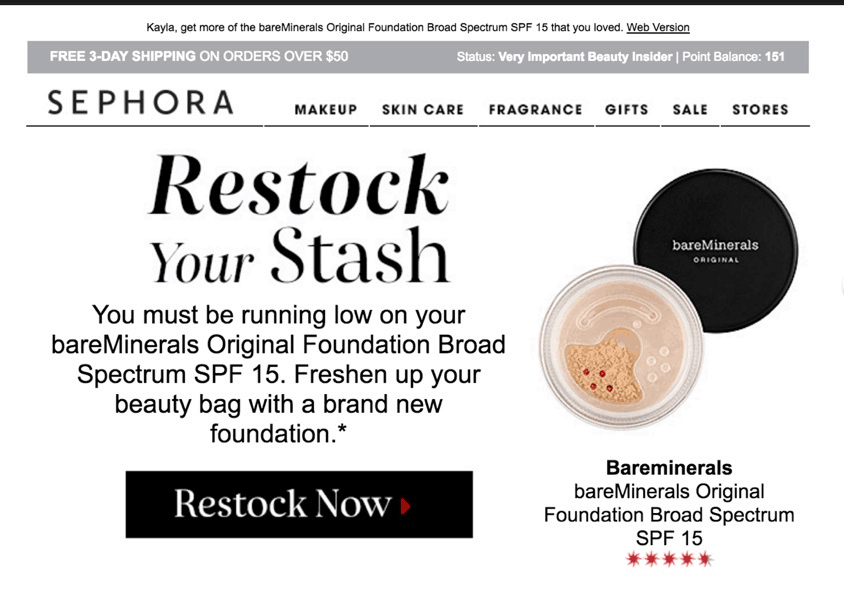
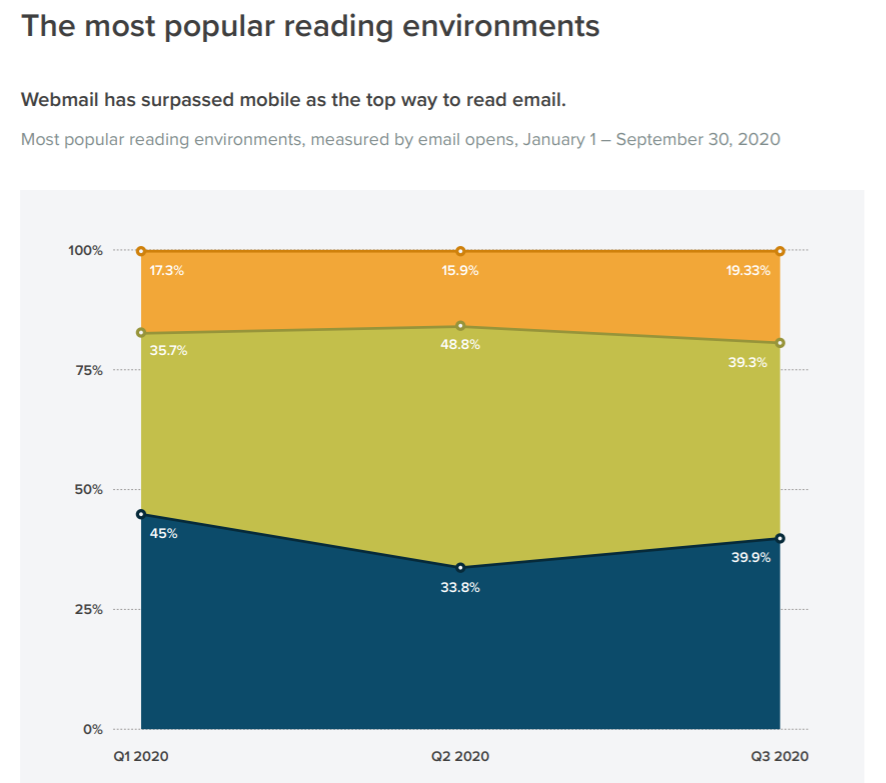
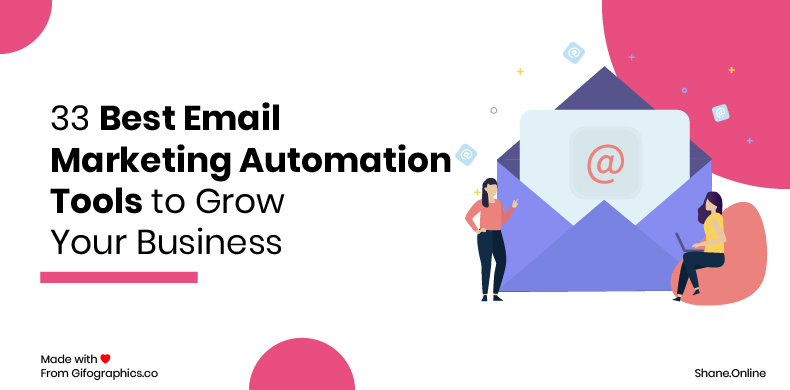
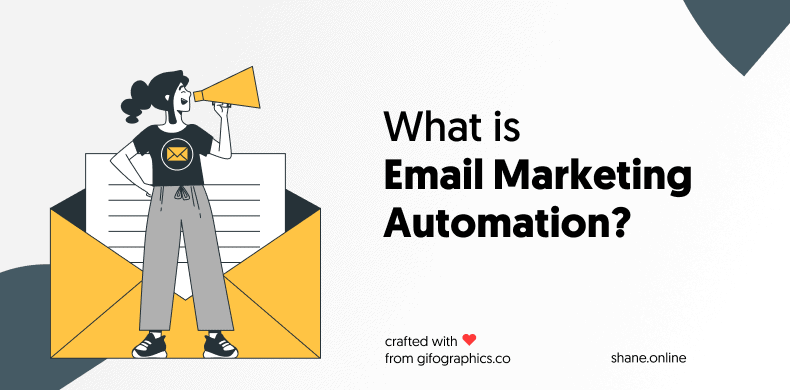
![21 best email marketing tools for [year] 9 20 best email marketing tools for 2023](https://shanebarker.com/wp-content/uploads/2021/10/Blog-Best-Email-Marketing-Tools.webp)
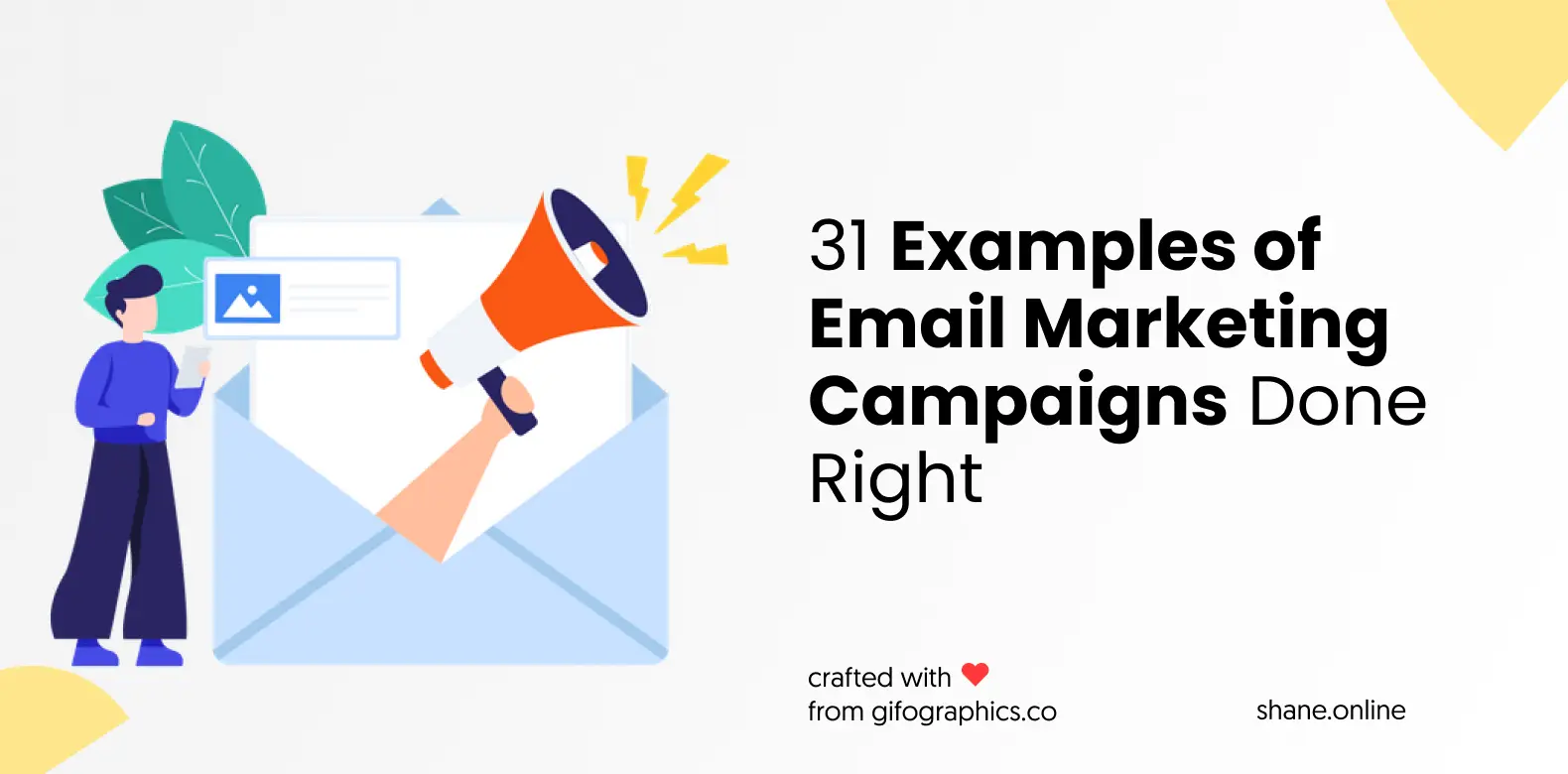
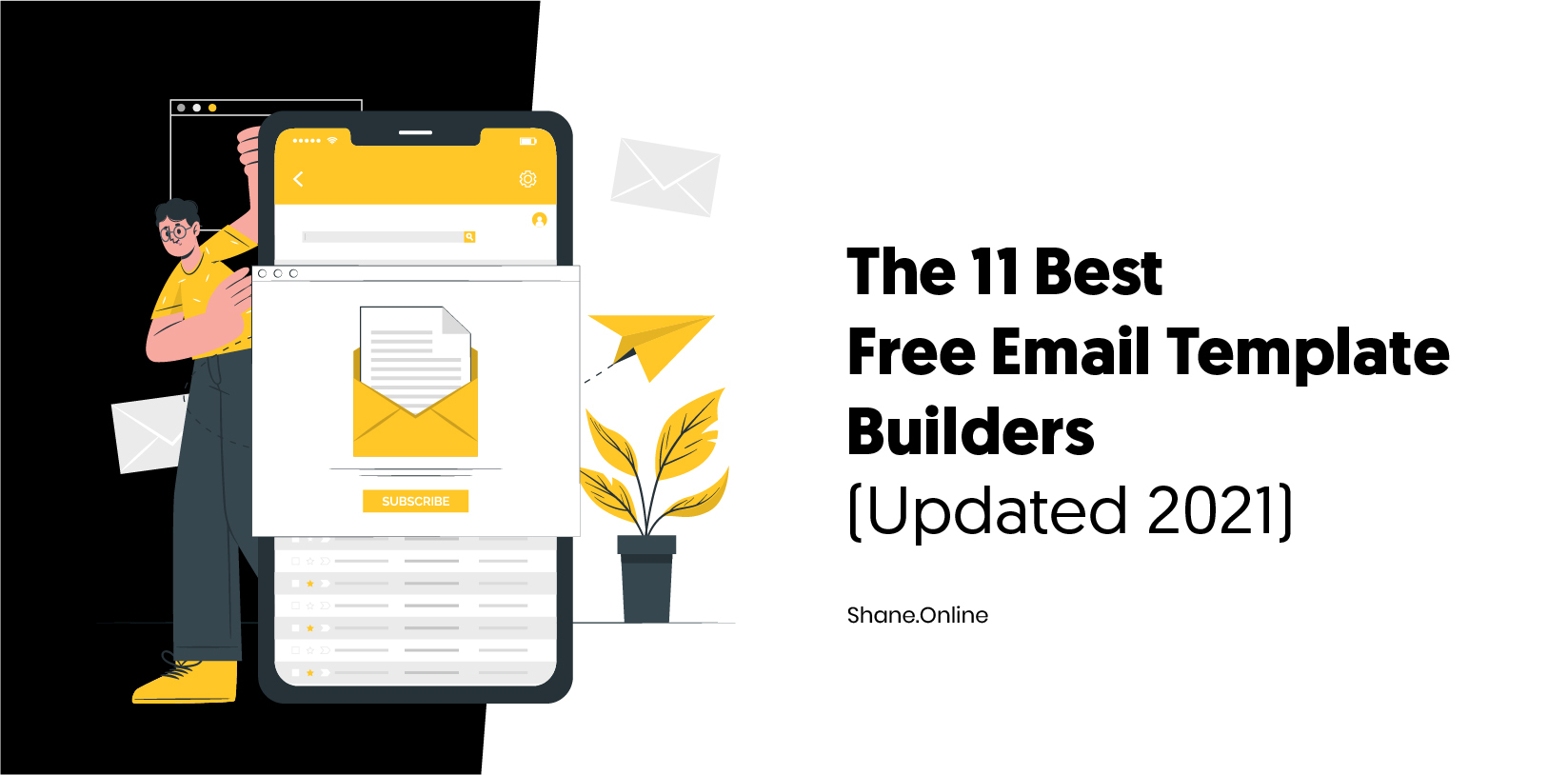

Thank you for sharing this information it’s very helpful.
Hey Cyrus, the pleasure is all mine. It feels so good to know that the information I shared was helpful for you.
You made a few good points here. Nice post!
Hi Tessmer, thank you so much. I’m happy that you liked the points I stated about email marketing strategy.
Nice article about email marketing and very useful, everyone should love this strategy because it is very easy to implement. Thanks for sharing the valuable post.
Hi Shubh, that’s really nice of you to say. I always try to offer my readers the most valuable information. I’m so happy to hear that you found my post about Email Marketing Strategy helpful.
Nice article and thank you for this valuable information!
Hi John, the pleasure is all mine. I’m glad you liked my post about Email Marketing Strategy.
Email marketing still remains to be the HIGHEST converting form of media. and marketing in the world. Gotta use what works, and not reinvent the wheel! For all of my clients I make sure lead generation is a huge focus of our work together. Another good article!